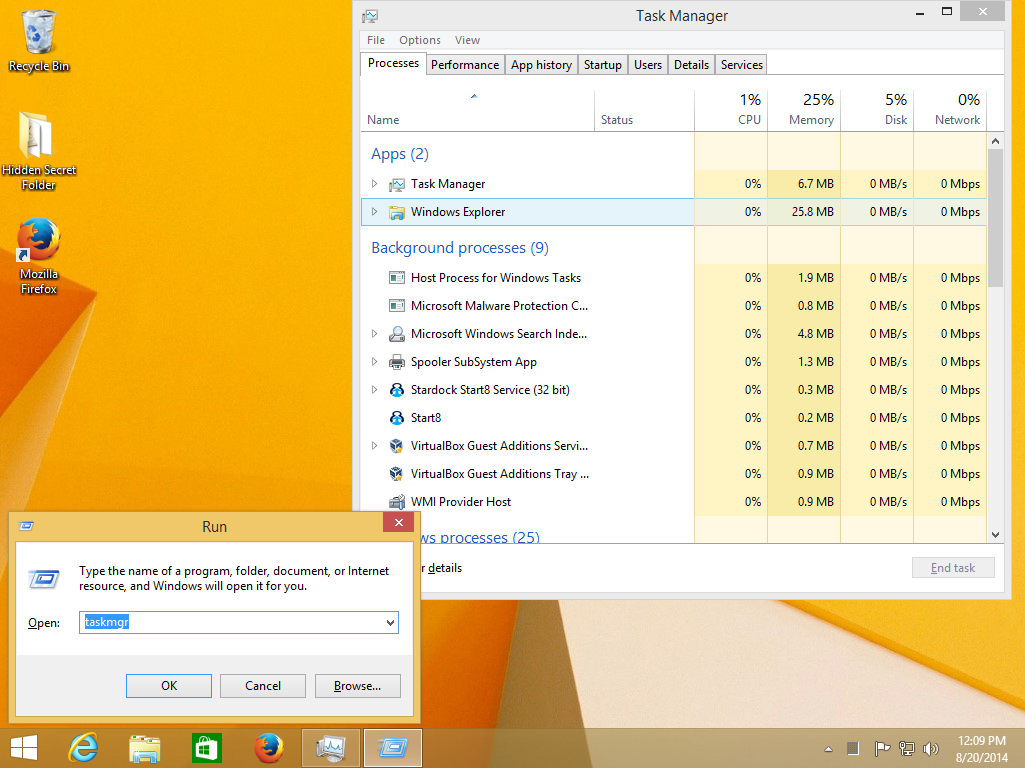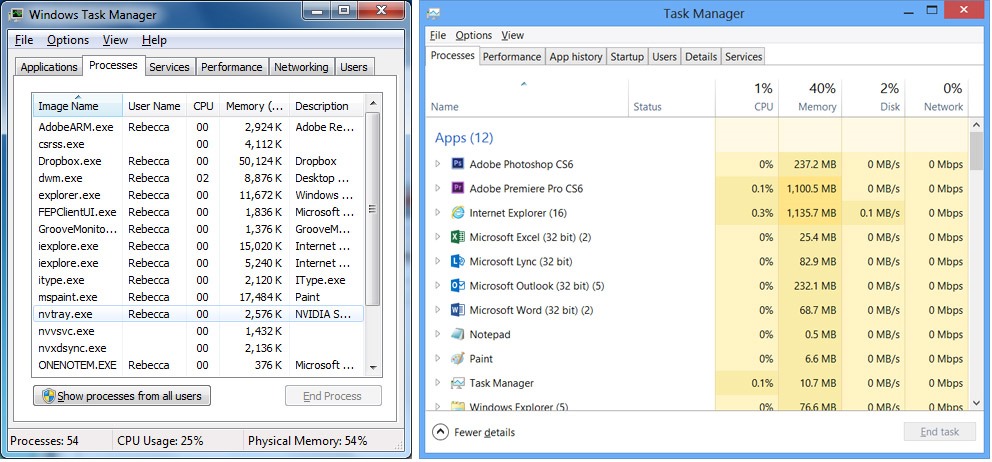
- #Task manager shortcut win 8.1 how to
- #Task manager shortcut win 8.1 code
- #Task manager shortcut win 8.1 windows 7
- #Task manager shortcut win 8.1 windows
#Task manager shortcut win 8.1 windows
Once you do that, you are done - the app or process will now auto run at Windows boot/login! Interesting Note In this “Create shortcut” window, click the “Browse” button to select the executable file (EXE) of the app or process you want to auto start.

Once the Run dialog has opened, you have to enter “ %AppData%” (without the quotes) and then click OK.Or, if you are using a tablet, swipe from the right edge of your screen, pick “Search”, then enter “run” in to the box after that, tap the “Run” result on the left side of your screen. You need to do the following steps to open Startup folder:
#Task manager shortcut win 8.1 how to
In this article, I will show you where the Startup folder is and how to add new startup apps or processes. As there is no Start Menu in Windows 8, figuring out where the “Startup” folder is, is more difficult in Windows 8.
#Task manager shortcut win 8.1 windows 7
But how about if you want to add a new startup app or process to the list, not remove an existing one? You may know this job in Windows 7 can be done easily by creating a shortcut of the program in “Startup” folder in Start Menu. In another article, I showed you how to manage startup apps via Task Manager. Beside that, it also changes many small things that you won’t notice until you need them. The techniques mentioned in this article work on Windows 10, Windows 8.1, Windows 8, Windows 7, Windows XP and Windows Vista.Windows 8 brings huge changes to user experience such as Start Screen, Windows Store apps, and Modern UI.
#Task manager shortcut win 8.1 code
:max_bytes(150000):strip_icc()/power-user-menu-windows-8-311d7d6ab6f44561933ddde85865cd81.png)
If Task Manager is still not available, restart your computer.Ĭreate a Registry(.reg) file for enabling Task ManagerIf you are unfamiliar with manually editing the Registry, you can create a Registry file which will automatically modify the Registry Key to re-enable Task Managing. After running the batch file, you will be able to again use Task Manager.

A command prompt window will flash for a second and then disappear indicating successful execution.

Restart your Computer or Log Off and Log back On to apply the changes.In the work area, double click on "Remove Task Manager" and set its value to Disabled or Not Configured.From the navigational pane at the left hand side, go to: User Configuration>Administrative Templates>System>Ctrl+Alt+Del Options.Windows 10, Windows 8.1, Windows 8, Windows 7 and Vista users, go to Search. To do so, just follow the steps given below:. It can also be used to enable Task Manager. Group Policy Editor is a feature in Windows which is used to edit local policy settings. If Task Manager is still disabled, restart your computer.Įnable Task Manager from the Group Policy Editor (Gpedit.msc)


 0 kommentar(er)
0 kommentar(er)
